Besides the market crash of 2008 (3rd move), the triple-pattern strategy also had gains during the summer crash of 2011 (5th move). To show how simple it is to recognize a triple pattern on the ebbchart, here's that bearish pattern 2-2-2 making an appearance last year (June 10-14, 2011). The strategy's move to the F-fund gained +4.24% while the S-fund lost -17.24% and the I-fund lost -21.12% (June 10 thru Sep. 22). There's nothing simpler than the triple patterns -- it's either there or not. Confirmations? What's that?
Note: Daily ebbchart patterns are posted a couple of weeks ahead of time.
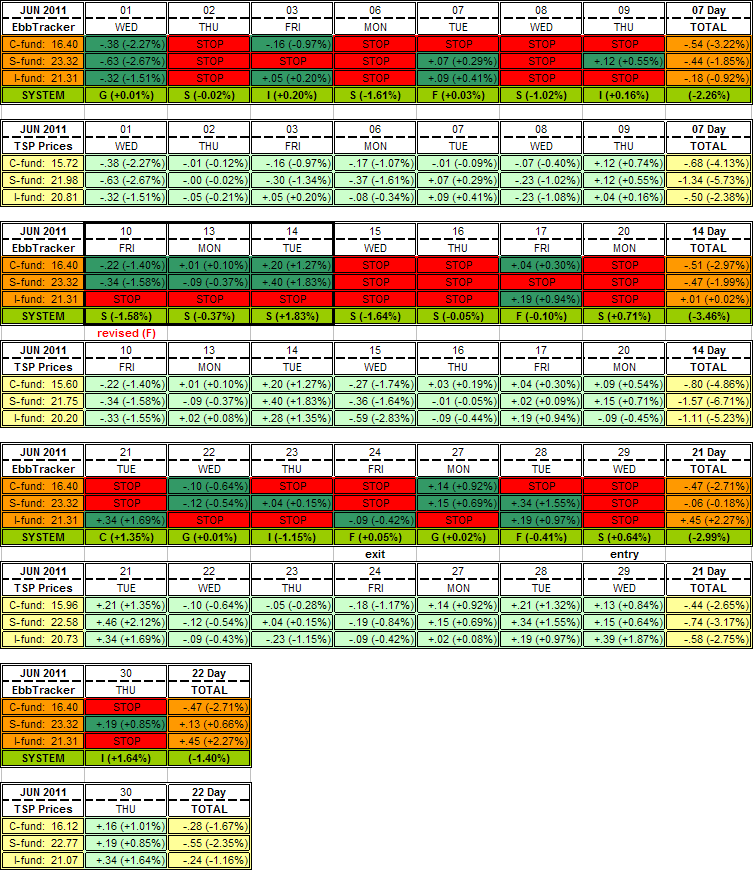


 Likes:
Likes: 

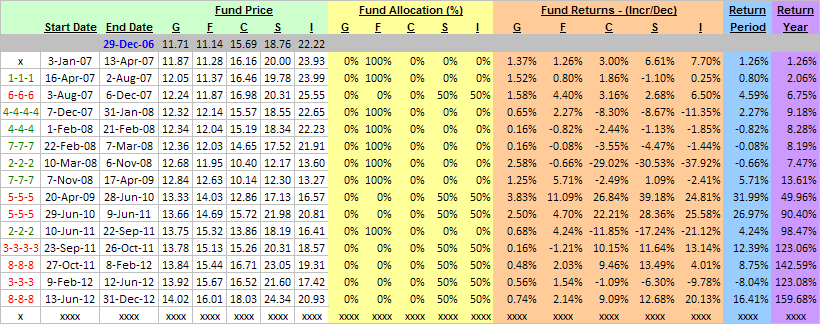

 Reply With Quote
Reply With Quote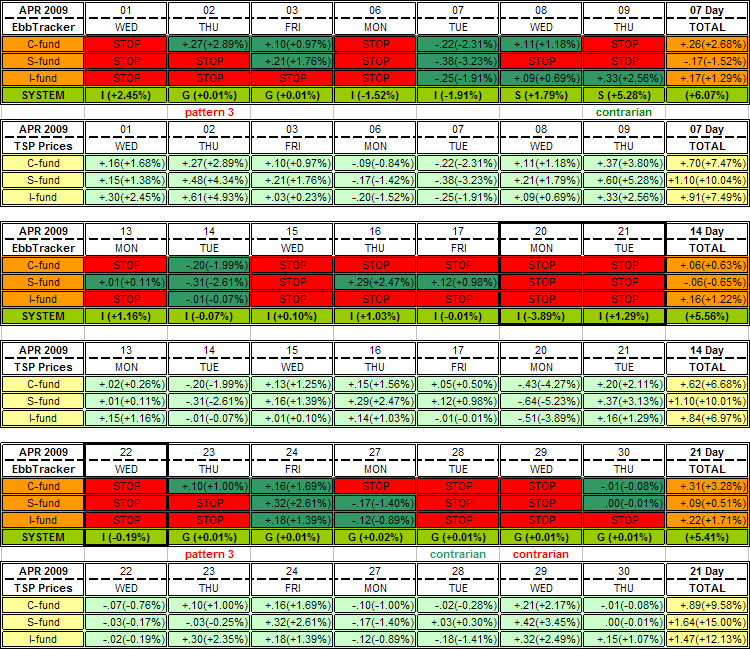
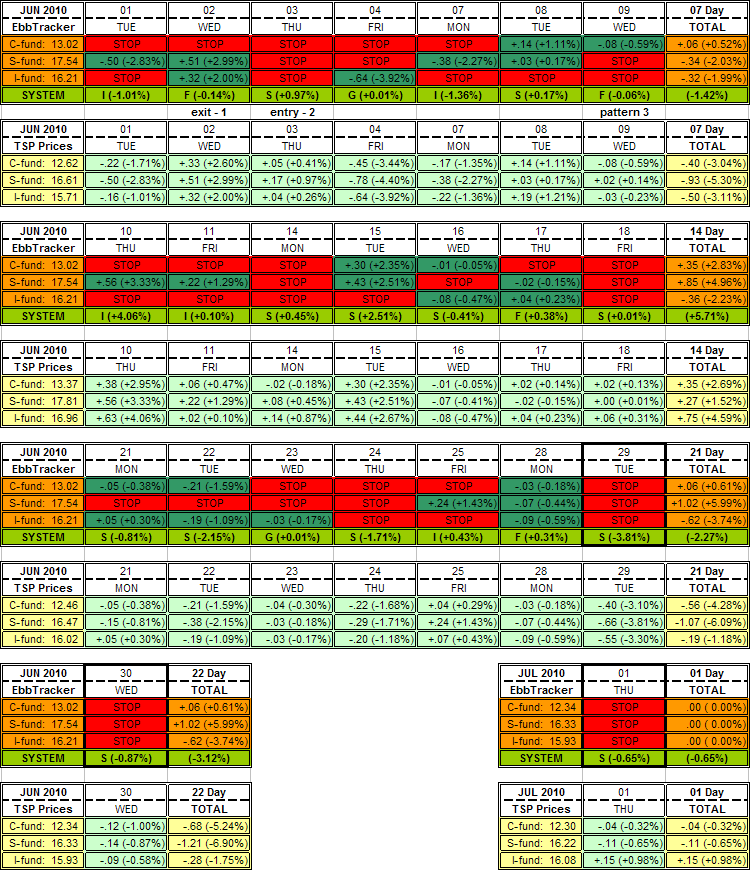
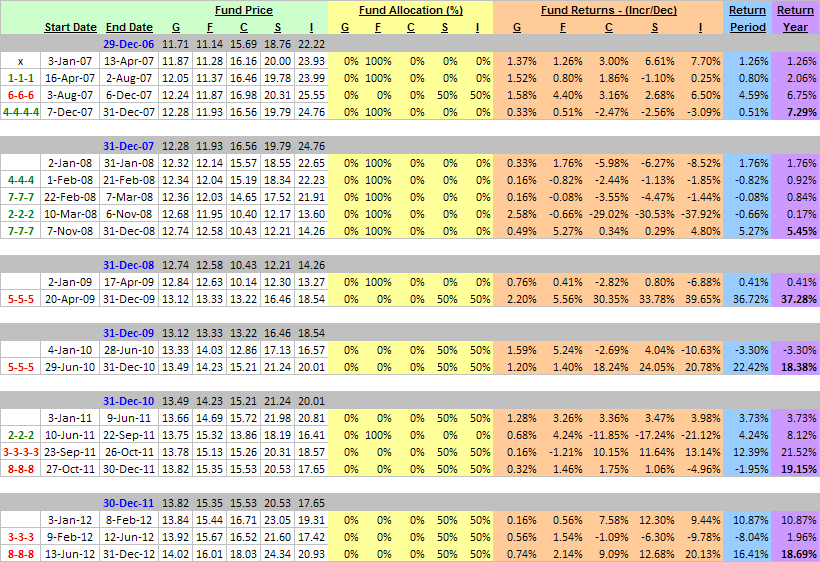


Bookmarks